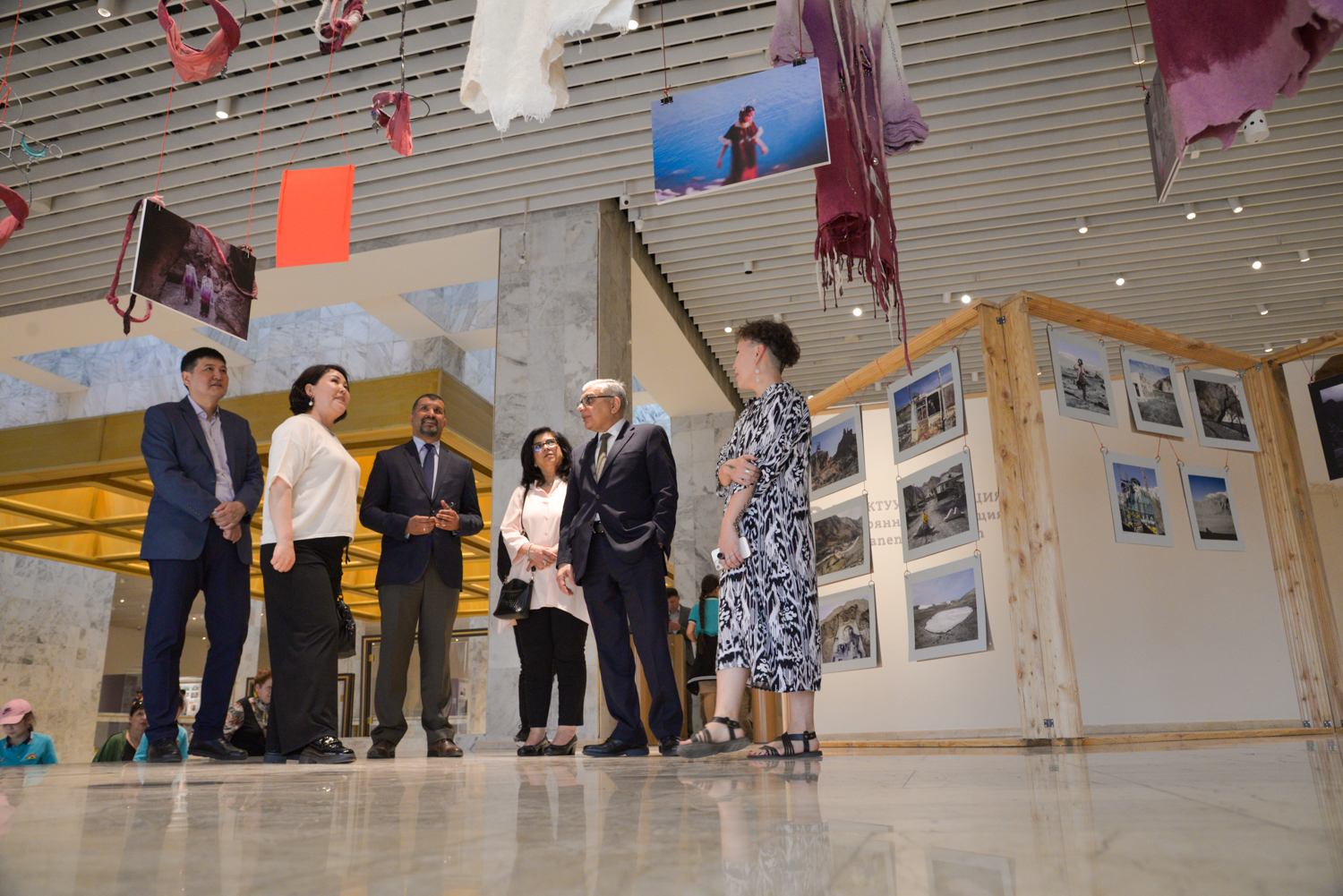
Cultural Heritage and Human Development in Central Asia
Speaking to people’s hopes and fears, the new Silk Road is evoking old images of caravans and new images of enhanced global communication and cooperation. Known for its challenging geographic terrain and harsh climatic conditions, the famous Silk Route in the high mountains of Central Asia carries a rich culture of migration, sharing of knowledge, and an invaluable heritage yet to be discovered.
Revisiting these mountain communities to seek stories of engagement, survival, resilience and perseverance, the University of Central Asia’s Cultural Heritage and Humanities Unit (CHHU) as part of the “Resilient Silk Route Heritage Network” funded by the Global Challenges Research Fund, UK, organised an international traveling exhibition called “Imagined Futures: Transit Corridors in High Mountain Asia". The initiative is devoted to various forms of artistic expressions of the mountain communities of Kyrgyzstan, Tajikistan and Pakistan. The exhibition has been displayed in Pakistan and Kyrgyzstan, and will continue its travel to Tajikistan and Kazakhstan. View a glimpse of the exhibition: https://youtu.be/sEGio50vas0.
Realising the immense potential of culture as a development resource for improving the quality of life of people, CHHU’s primary role is to preserve the values of Central Asian culture and traditions. Alongside the traveling exhibition, CHHU has made a significant contribution over the years, through public-private partnerships and obtaining support from the government and local communities, to help safeguard the region’s culture.
Earlier this year in January, CHHU supported the publication of a music encyclopedia, Solfeggio Based on Kyrgyz Melodies and Songs (Ethnosolfeggio), in response to a special request from young musicians of Kyrgyzstan. Even after the collapse of Soviet Union, Kyrgyz musicians have been learning music using Slavic and Western European notated songs and melodies. Fostering the music heritage by enabling modern young musicians of the country to study best examples of Kyrgyz traditional classics, and making valuable archival records available to all music institutions in the Republic, the textbook contains transcription of 300 original recordings and some personal collections of musicians. Download the book: https://bit.ly/3A03hGd.
Within the framework of the Cultural Production Series led by CHHU, the Unit has produced several powerful stories of hope and resilience. The series sheds light on the bearers of traditional knowledge, who are aging, and unfortunately the younger generation of Central Asians are showing little interest in the practices and traditions of their ancestors. In a documentary film series titled Man - Universe, Aibek Baiymbetov (a filmmaker and Junior Research Fellow at CHHU), informs the public about the life and work of cultural practitioners living an ordinary life in the villages with an extra-ordinary fate and mission. Watch all films: https://bit.ly/CHHU-Films. One of the films, Akkel (Grace), based on the oral folk art of Kyrgyzstan, featuring an epic storyteller known as Manaschi, has won national and international awards.
Among some of the significant initiatives of CHHU is the extension of support to the preservation of museums in Kyrgyzstan. Strengthening the role of museums as independent social and cultural institutions, CHHU supported the organization of the first National Museum Forum "Sustainable Museum: Driver of Regional Development". Attended by more than 50 museum specialists, the forum discussed financial challenges faced by the government in supporting museum initiatives, and the need to develop innovative ways of expanding the audience by learning multimedia approaches, tools, and technologies to present old historical objects, artifacts and stories.
Following its mission of installing innovative artistic and visual exhibitions and museums, CHHU organised an art and research exhibition called “Phantom Memories” in remembrance of the lives lost during the Central Asian Revolt in 1916 (Urkun). The exhibition could not show historic artifacts as there are no surviving resources available from a tragedy that took place over hundred years ago. Instead it is a collection of stories voiced by the descendants of the victims who are keeping the memories alive.













